thenewbigpicture
Latest
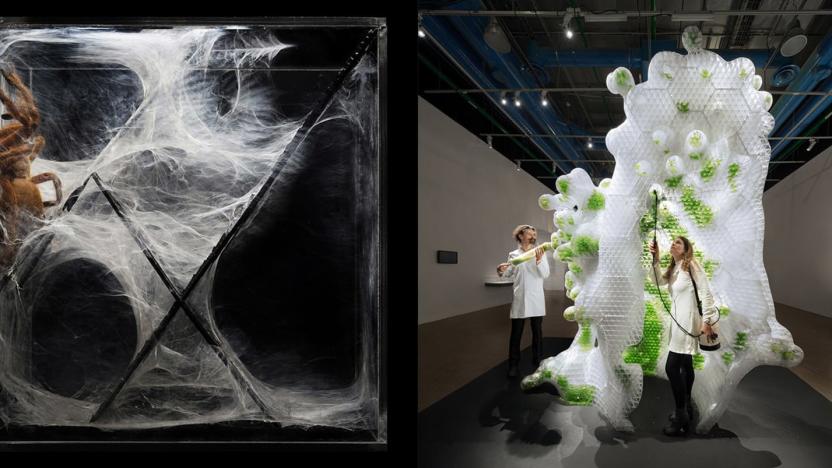
Exploring life's digital boundaries with 'Factory of the Living'
Two new works from the Factory of the Living exhibition at the Pompidou Center in Paris show how digital technology is influencing art and biology. Both pieces were developed in "collaboration" with living organisms:The first, H.O.R.T.U.S. XL astaxanthin.g, from ecoLogicStudio was built using cyanobacteria, and the second, Urban Morphogenesis Lab's XenoDerma, gets an assist from an asian fawn tarantula.
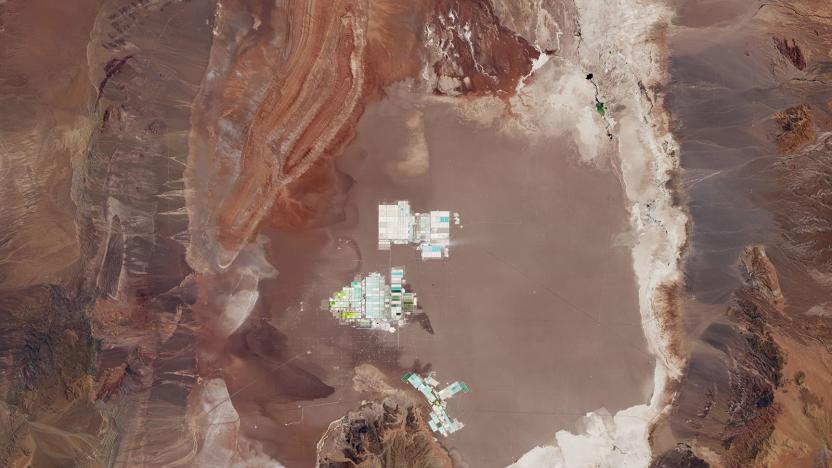
EV batteries are born in Chilean evaporation ponds
Using Landsat data from the US Geological survey, NASA's Laren Dauphin recently imaged the Salar de Atacama in Chile. The enclosed basin is the world's largest source of lithium, producing 29 percent of the world's reserves. Much of it will wind up in rechargeable batteries used by EVs, laptops and smartphones, but how it gets there is surprising -- think salt production, not pit mines.

'Selfie harm' and the damage done by social media
With a new project called Selfie Harm, photographer John Rankin Waddell, better known as Rankin, wanted to see the role social media played on self image in young people. He took photos of a group of teens aged 13 to 19, then asked them to spend a few minutes editing the shots using one of the many selfie apps marketed at teens. The result? "People are mimicking their idols, making their eyes bigger, their nose smaller and their skin brighter, and all for social media likes," he said on Instagram.

Bringing the wonder of old-school survey maps into three dimensions
Mapping technology is infinitely better than it used to be, but satellites and LiDAR can never recapture the craft that went into making old-school US Geological Survey Maps. Instead, graphic designer Scott Reinhard is trying to bring a modern touch to the old designs using 3D technology. He used elevation data from the United States Geological Survey to create 3D elevations of the topography, then merged the data with the vintage designs of the old maps.

Rotating LEDs reveal the moon as art subject and inspiration
The moon has always been there for us, providing illumination and marking time while inspiring mankind in art, science and space exploration. Taipei-based studio Whyixd is presenting a new way of looking at it with an installation called #define Moon _. It consists of nine rotating LED installations that emulate the full, waxing, waning and seasonal phases of our satellite.

50 years ago, 'Earthrise' inspired the environmental movement
The most famous photo ever taken from space, Earthrise, is 50 years old today. It's so iconic that we now take it for granted, but it may have had a greater impact on humanity than any photograph ever taken. Far from being planned, astronaut Bill Anders snapped it during the ground-breaking Apollo 8 mission on the spur of the moment. "Suddenly we saw this object called Earth," Anders told the Guardian. "It was the only color in the universe."

The 'Nightflyers' TV show has some killer user interfaces
The latest adaptation of Nightflyers, a novella and short story collection written by George R. R. Martin in the 1980s, premiered on Syfy last weekend. If you're following the nightly episodes, you'll know how integral the titular spaceship, with its gloomy corridors and breathtaking habitat domes, is to the plot and mood of the show. Syfy and Universal Cable Productions paid Territory Studio, a specialist in on-set motion graphics, to shape the vessel's visual language. (The show will be coming to Netflix at a later date.) The team produced over 1,200 'screens' -- fictional interfaces that actors could see while performing -- across a broad range of sets, including medical labs, cabins and cargo bays.

'Elephant Walk-ing' $3 billion worth of F-35 fighter jets
After years of cost overruns and criticism, the US military has started to deploy its stealth-enabled F-35 fighter jet. To communicate that message in no uncertain terms, the Air Force's 388th and 419th Fighter Wings carried out combat exercises meant to test the capabilities of their F-35As. The drill started off with an "Elephant Walk" that placed 36 of the jets (one is missing in this photo) on the runway all at once, worth $3 billion, at least at the current $90 million per airplane price.
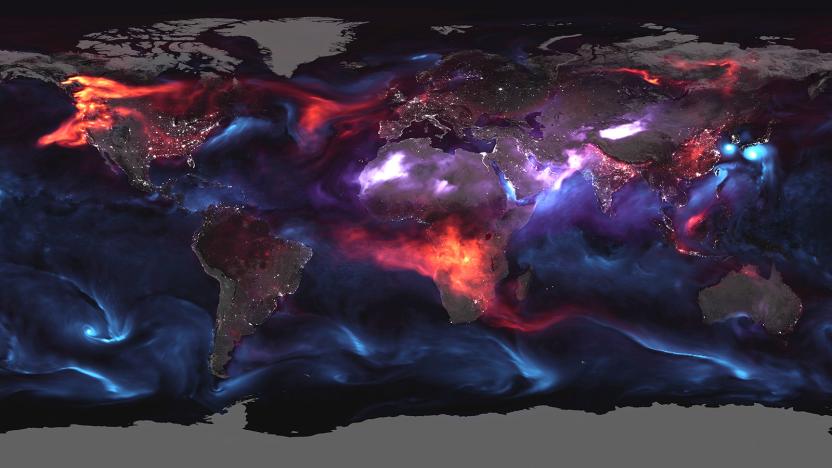
NASA's terrifying visualization of atmospheric aerosols
Heatwaves, hurricanes and other extreme weather might be the "face of climate change," but it's not the only sign. A grim new visualization from NASA shows another problem caused indirectly by global warming: airborne particles and droplets. These "aerosols," shown on a single day on August 23rd, come from dust, volcanic ash and other sources. They're particularly brutal this year because of fires in California, British Columbia and the southern part of Africa.
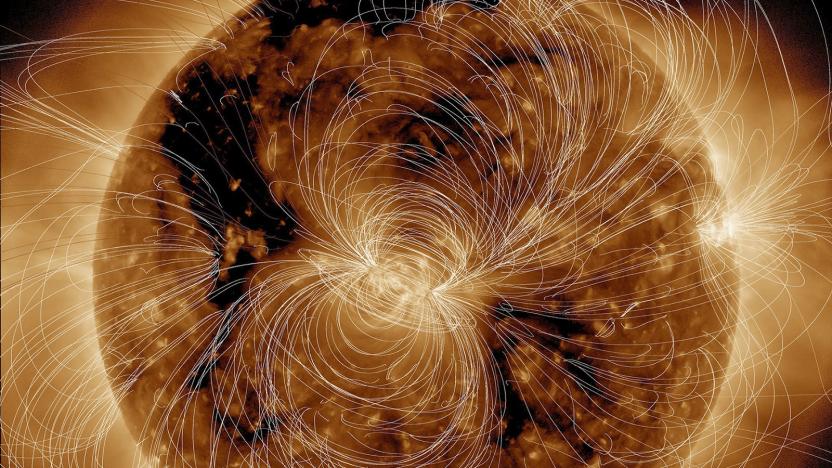
Just another day in our Sun's crazy magnetic life
Sunspots, flares and other solar activity show the sun's wild side, but we never see the massive forces that cause them. Now, scientists from NASA's Solar Dynamics Observatory (SDO) have created a visualization of the powerful magnetic fields that create havoc on the solar surface. They overlaid a computer-generated magnetic field onto a live image from August 16th, giving us a fuller picture of the sun's power and menace.

Auctioning a Russian spy camera disguised as... a camera
Spycraft in the Cold War was a lot different than it is now. Rather than hacking computers or trying to fix elections on social media, spooks dug up secrets using cool gadgets. Aston's Auctioneers in the UK just sold off a very interesting batch of 25 rare USSR-era cameras. The most interesting of those may be a miniature spy camera designed to look like a much less conspicuous Soviet-made KMZ Zenit-E SLR.

A real-life 8-bit installation pixelates a Greek ruin
Ideally, an artwork makes you question the world and looks beautiful doing it. A new installation from German artists Thomas Granseuer and Tomislav Topic, aka Quintessenz, does all that. Located on the Greek island of Paxos as part of the Paxos Contemporary Art Project, Kagkatikas Secret is made of spray-painted textiles hung in a 400 year-old Greek ruin. The trippy, pixelated effect will make you wonder if the matrix is glitching, while the beautiful design and gradient colors helped it go viral instantly.

Catching the ISS's fleeting pass between enormous sunspots
Astrophotography requires abundant patience and planning, but as Spanish photographer Dani Caxete has shown, you sometimes need quick reflexes, too. His entry in the Astronomy Photographer of the Year 2018 contest shows the International Space Station (ISS) superimposed on the sun, in between two large sunspots. He didn't have a lot of time to grab it -- traveling at 5 miles per second, the ISS took just 0.5 seconds to pass in front of our star.
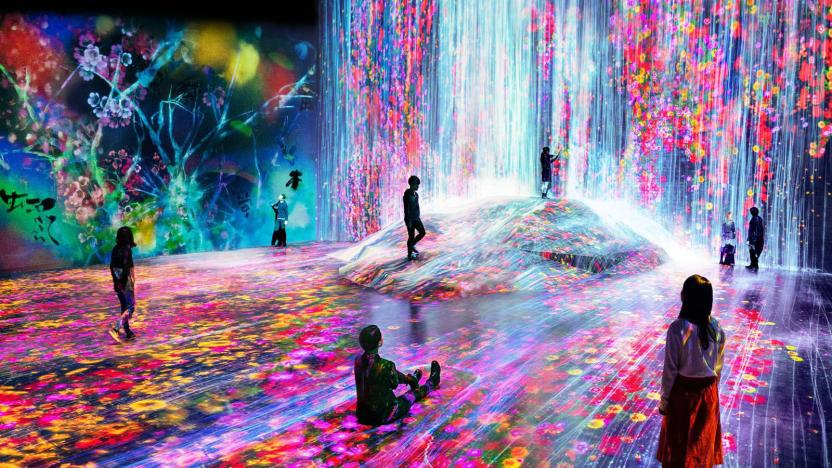
Become one with art at Tokyo's psychedelic digital museum
Japan's TeamLab has created some of the most trippy, interactive and Instagram-able digital art installations ever. It's only fitting, then, that the group is getting its own digital museum in Tokyo, thanks to developer Mori and Epson. The Mori Building Digital Art Museum has 100,000 square feet of exhibition space, with around 50 installations that generate imagery thanks to 520 computers, 470 projectors and numerous motion sensors.
![Copernicus Sentinel data [2018], processed by Pierre Markuse](https://s.yimg.com/uu/api/res/1.2/wkiqr9fo8q.ujphEfZMnSQ--~B/Zmk9ZmlsbDtoPTQ2ODtweW9mZj0wO3c9ODMyO2FwcGlkPXl0YWNoeW9u/https://o.aolcdn.com/hss/storage/midas/405f5747485b92f7df9d1ac22845efd3/206453233/kilauea-volcano-infrared-2018-06-14-01.jpg.cf.jpg)
The drama and fury of Kilauea's volcano from space
Hawaii's Kilauea Volcano is causing all kinds of havoc. So far, it's wiped out at least 600 homes including a neighborhood called "Vacationland," completely filled in Kapoho Bay and rained olivine gems from the sky. Now, its destruction has been caught by the ESA Copernicus satellite Sentinel-2B (in visible and infrared light) with some dramatic enhancements from photo and geography enthusiast Pierre Markuse.

'Inventory' preserves street clutter with photogrammetry
Most of the time, we barely notice the lamp posts, bollards and road signs around us. They're street clutter that barely registers in our brain as we go about our busy lives. But Oddviz, an art and design collective from Istanbul, looks at them differently. The group sees this 'street furniture' as important culture capsules that evolve as they corrode or get covered in posters, stickers and graffiti. Society doesn't protect them, though, like an iconic landmark. So Oddviz has started documenting them -- a form of digital preservation -- using a 3D modeling technique called photogrammetry.

Plasticine circuits show how today's tech is tomorrow's art
How will the people of tomorrow judge what we call advanced technology today? Artist Tim Easley explored that subject with a piece he created for the UK electronic dance music group Modified Man. Using plasticine clay, he created a highly detailed, fanciful circuit board measuring 20 by 20 inches (50 x 50 cm) for the cover of the duo's latest release, Modifications: Set 2.
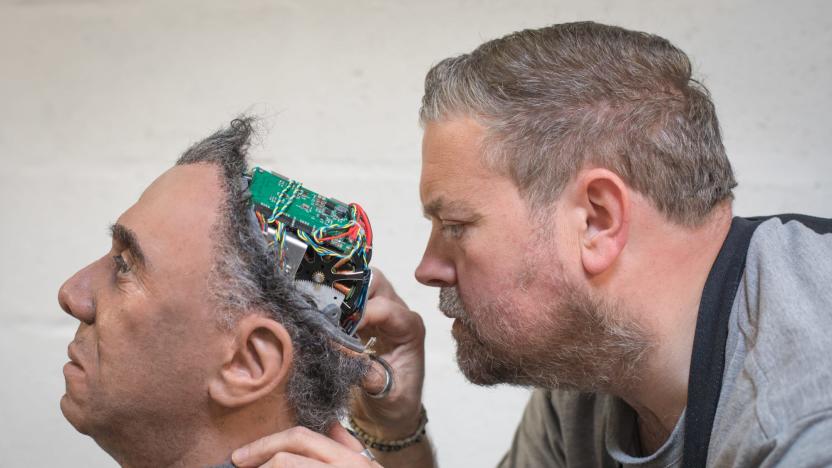
Westworld-like 'Mesmer' robot comes alive in a UK factory
We all love Westworld, but its main premise -- that we'll be able to build robots identical to human in the near future -- still seems impossibly far-fetched. That said, a company called Engineered Arts is definitely exploring the edges of the uncanny valley. It has built a number of life-sized, humanoid robots that look incredibly realistic and move smoothly, quietly and relatively naturally.
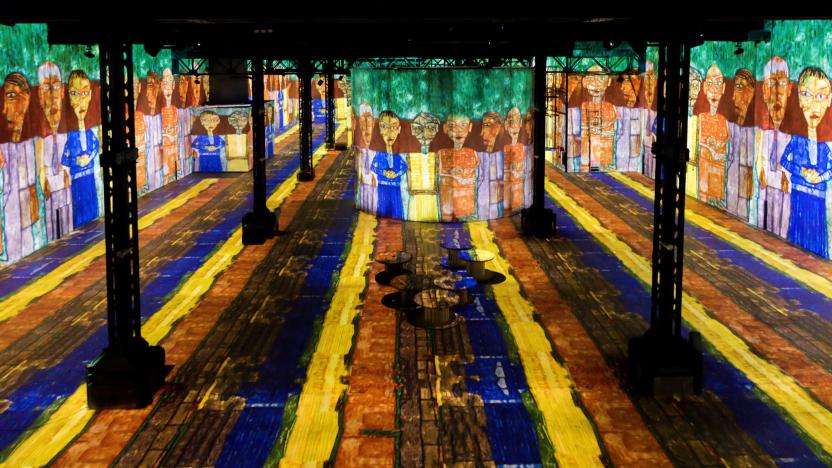
Projection is the ideal medium for Gustav Klimt's electric art
Austrian artist Gustav Klimt is celebrated for his boldly-colored paintings that marry portrait, decorative, symbolic and abstract art forms. Nowadays, they sell for vast fortunes at auction, making it difficult to see a comprehensive collection in one place. A brand new Paris exhibition space called Atelier Des Lumieres (meaning "Studio of Lights) is showing many of his paintings in a whole new way, by projecting them on 35,000 square feet of space including the walls, floors and ceilings.

Hubble flies through the Milky Way's 'raucous star nursery'
Over the past 28 years, the Hubble Space Telescope has inspired a generation of astronomers with insanely dramatic views of the universe, but it's hardly done blowing our minds. NASA has unveiled a new fly-through video of the Lagoon Nebula. Located in the center of the Milky Way, NASA calls it a "raucous star nursery" full of dust and star formation with "Herschel 36," a star 200,000 times larger than our sun, at its center.

